
Overcoming Algal Vitamin B12 Auxotrophy by Experimental Evolution
Vitamin B12 (B12) is produced only by prokaryotes (Fang et al., 2017), but is also widely required among eukaryotes as an enzymatic cofactor. In the green lineage, the only B12-dependent enzyme is methionine synthase. Several green algae can synthesize methionine only thanks to B12 provided by mutualistic…
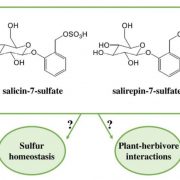
Sulfotransferase 1 is the enzymatic hub of sulfated salicinoids in poplar.
Plants produce a plethora of specialized metabolites serving as a chemical arsenal against abiotic and biotic challenges during their lifetime. Core metabolites serve as building blocks for diverse decorating enzymes like oxidases, reductases or transferases that introduce new functionalities expanding…
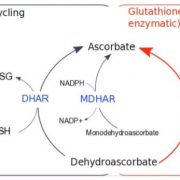
What Are the Roles for Dehydroascorbate Reductases and Glutathione in Sustaining Ascorbate Accumulation?
Elisa Dell’Aglio1 and Amna Mhamdi2
1 Institut National des Sciences Appliquées-Lyon, 69100 Villeurbanne, France
2 Ghent University, Department of Plant Biotechnology and Bioinformatics, and VIB Center for Plant Systems Biology, 9052 Ghent, Belgium
Address correspondence to elisa.dell-aglio@insa-lyon.fr
Ascorbate…

Modifying ripening through modular transcription
Sophia G. Zebell
Howard Hughes Medical Institute, Cold Spring Harbor Laboratory, Cold Spring Harbor, NY, USA
Manipulation of ripening, the process that turns hard, flavorless green tomatoes (Solanum lycopersicum) into the juicy, aromatic red fruits enjoyed worldwide, is of particular commercial…
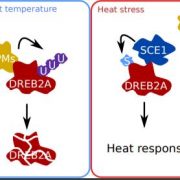
Hot on the trail of DREB2A protein stability
Madeleine Seale
Department of Plant Sciences, University of Oxford, South Parks Road, Oxford, OX1 3RB, United Kingdom
maddy.seale@plants.ox.ac.uk
ORCID: 0000-0002-8924-3943
Responding to environmental stresses is crucial for plant survival. Research published this month in Plant…
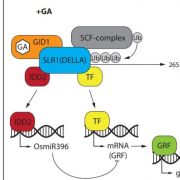
Gibberellin signaling in plants – Entry of a new microRNA player
Raimund Nagel
University of Leipzig
raimund.nagel@uni-leipzig.de
Gibberellins (GA) are essential hormones that control plant development as major regulators of stem elongation, germination, dormancy, flowering, leaf senescence and fruit development (Hedden and Thomas, 2012). Their biosynthesis…
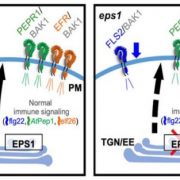
EPSIN1 contributes to plant immunity by modulating the abundance of pattern recognition receptors at the plasma membrane
Wei Zhang
Department of Plant Pathology, Kansas State University, 1712 Claflin Road, Throckmorton Hall, Manhattan, KS, 66502, USA
weizhang17@ksu.edu
ORCID 0000-0002-5092-643X
Plants have evolved many pattern recognition receptors (PRRs) that localize to the cell surface. As the frontline…

Silencing Immunity: miR159 Suppresses Pathogen Responses in Tobacco
Michael J. Skelly
M.Skelly@ed.ac.uk
To ensure optimal growth and development, plants must precisely control gene expression networks in a tissue-specific manner. MicroRNAs (miRNAs) are a class of small non-coding RNA molecules that post-transcriptionally silence genes by binding to complementary…

Photosynthesis in the womb: does embryonic photosynthesis give seedlings a head start?
It might be a little known fact, even among plant biologists, that in embryos of many species of the Fabaceae, most oilseed plants and Arabidopsis thaliana embryos can photosynthesize within the seed (Tejos et al., 2010). We do not know why plant embryos have this capacity, since embryos are surrounded…

